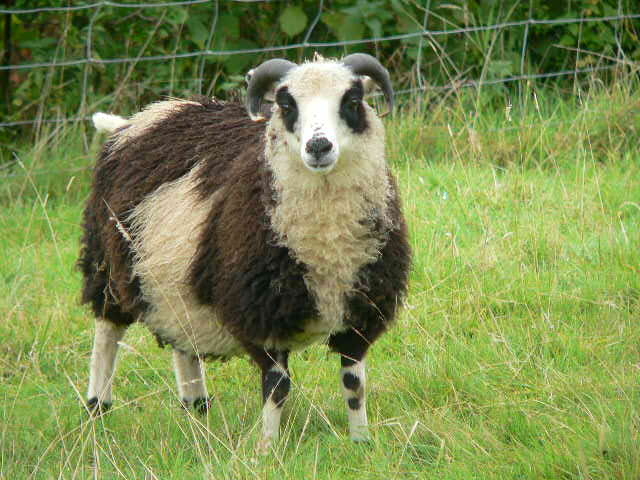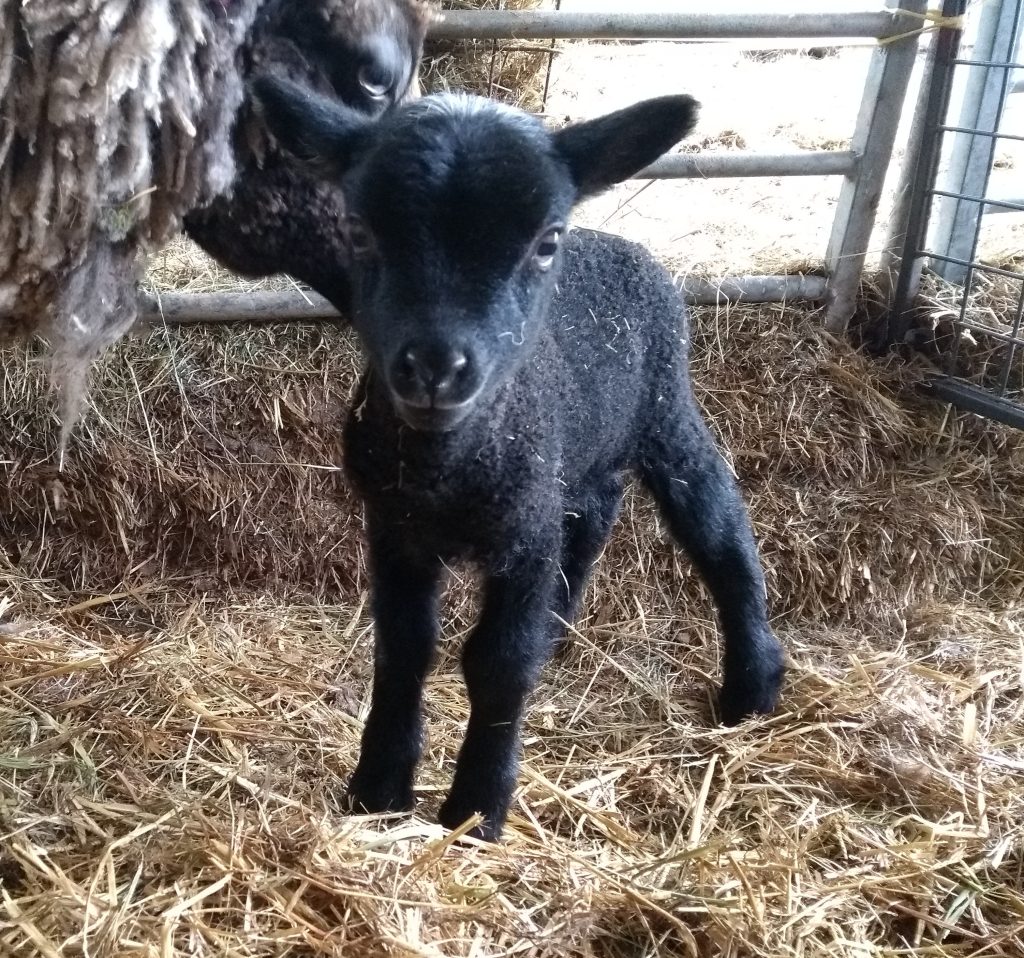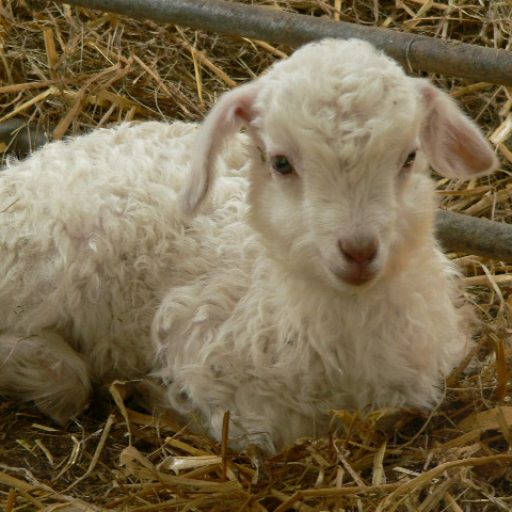The Bowmont breed was created by the Macaulay Land Use Research Institute in Scotland about 40 years ago in a project to increase the income from wool on hill and upland sheep flocks.
The finest fleeced British breed, the Shetland, and the Saxon Merino were crossed and then those mated again to the merino to stabilise the breed at 75% merino / 25% shetland producing a sheep with high quality fine wool. When the project funding stopped the sheep were dispersed, remaining in several small flocks around the country.
The Bowmont is a small sheep, a little bigger than a shetland, but has a much denser fleece. The wool is white with a fine crimp, about 3-5″ and in the range of 17 – 20 micron. A ewe’s fleece weighs approximately 2.5 kg. Because it is such dense wool on the sheep, dirt is mainly on the tips which can be felted or have a greenish tinge. This can usually be pulled or cut off leaving a good length of clean fleece to process.

Although the bowmont is a white sheep, the coloured shetland genes sometimes surface in my sheep. Most lambs are born white with pink noses but I have had a few born ginger and one or two with small brown patches. The ginger fades over the first few months with just the hair parts keeping a ginger tinge. Jac, whose 3rd fleece is pictured above, was born ginger. Now it’s bright white.
A couple of my ewes have tiny spots of black wool and black patches on their noses and ears. I’d love to have some coloured sheep with fleece this fine.
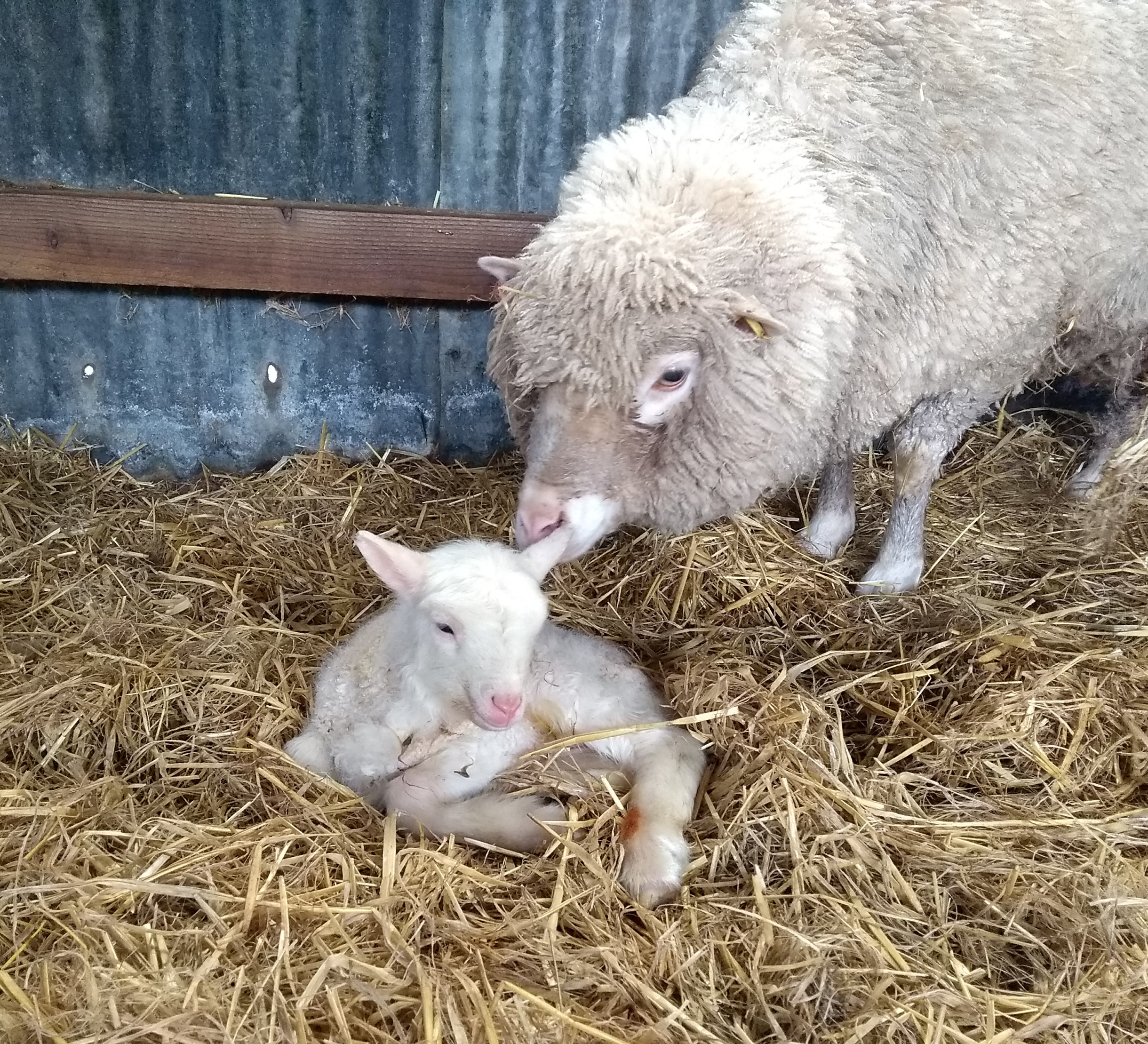
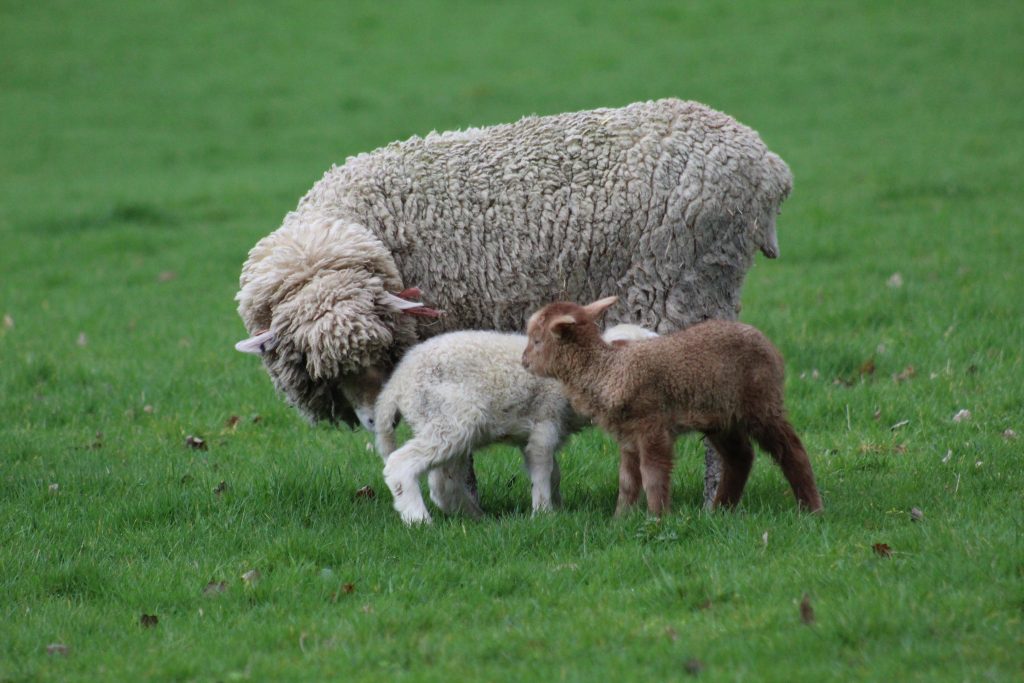
Some shetland breeders like to work out the colour genetics, I just like to wait and see what comes. The Shetland sheep society website has information about the 11 main colours and 30 recognised patterns with the proper names.
The colours change as the sheep grows with some born black turning brown or the tips of brown fleece fading to a golden colour in the sun.
